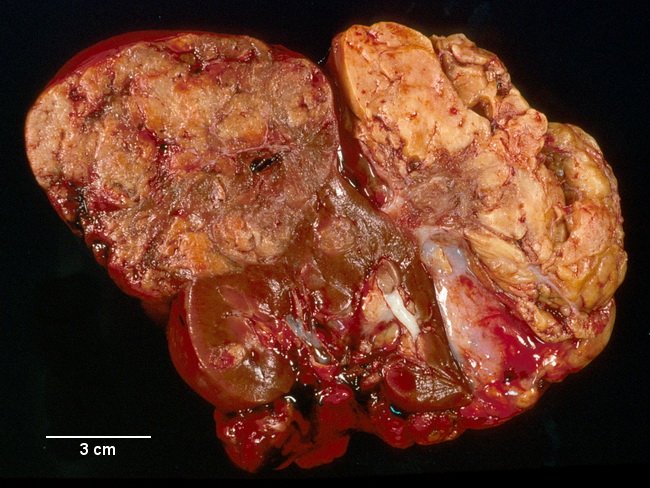Angiomyolipoma


Comments:
A massive angiomyolipoma (AML) with extension into the perirenal soft tissues. About one-third of patients with AML have tuberous sclerosis and about 80% of patients with severe form of tuberous sclerosis develop angiomyolipomas. Tuberous sclerosis is an autosomal dominant complex associated with mutations in two genes: TSC1 (located at 9q34; protein product hamartin) and TSC2 (located at 16p13.3; protein product tuberin). Both genes are characterized as tumor suppressor genes. Hamartin and tuberin function together as a complex and negatively regulate mTOR signaling pathway which is important in regulation of cell growth and migration. The clinical symptom complex includes mental retardation, seizures, and hamartomatous tumors (renal AML, cardiac rhabdomyomas, pulmonary lymphangiomyomas, subependymal giant cell astrocytomas, and facial angiomyofibromas).



